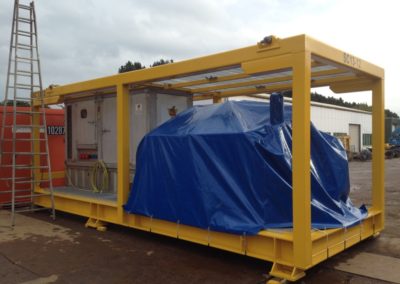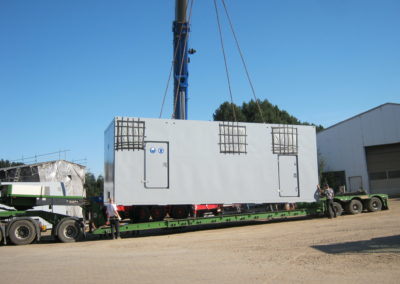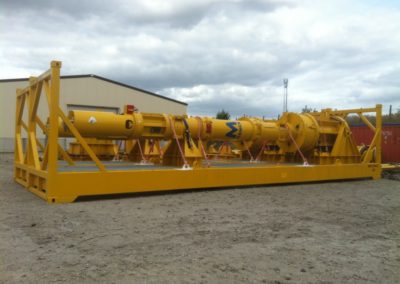Portable Offshore Units DNV 2.7-3
Our product range includes special designs, certified in accordance to DNV 2.7-3 Portable Offshore Units.
The standard takes effect mostly when the component size exceeds 25,000 kg and can no longer be certified as an offshore container. Portable offshore units, however, are not intended to function as a transport container for general cargo.
In the DNV 2.7-3, the offshore units are divided into building types, and classified into one of three Operational Classes, which regulate the use of up to a defined wave height.
There is the Operational Class: R30 = 3,0m, 4,5m = R45, R60 = 6,0m and the following building types:
Type A:
Portable Offshore Units Type A consists of a primary frame. In general they share many characteristics with the offshore containers according to DNV 2.7-1, but possess in certain areas more room for maneuver.
They can be designed and certified for example, for individual shipments. The maximum total weight can
be up to 100 tons, and it can also be certified units, which do not fulfill the requirements of DNV 2.7-1
for other reasons.
Type A units will be often used as a service pack using, for example: generating units, pumps, pressure vessels, winches, etc.
Type B:
Portable Offshore Units Type B doesn’t have a proper primary frame and have no direct protections against collisions. One reason for the omission of that provision, is the size or shape of the portable offshore units, it can be also of course other considerations behind it. Type B units can be used for the same purposes as Type A units.
Type C:
Portable Offshore Units of type C have no additional frame. According to their form, they build their own frame and are equipped with their own adjustable feet, resting points or bearing blocks.
Type C units may be, for example, cable or hose reels, pressure vessel or tubular masts.
Type D:
Portable Offshore Units of type D possess no direct primary framework. Load that occurs is carried through the outer shell or casing, which are adjusted by sufficient reinforcements.
Type D units are generally operating cabins or smaller modules for services.
Type E:
Portable Offshore Units of type E are units that cannot be assigned to any of the four previous types of DNV 2.7-3, nor the DNV 2.7-1. They are defined together with the classification association.
An example of a type E unit would be lifting means, which has been designed for a specific task purpose.



